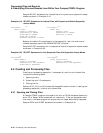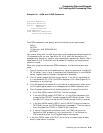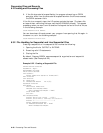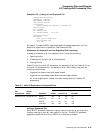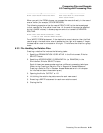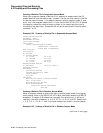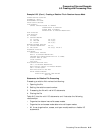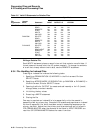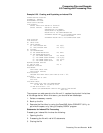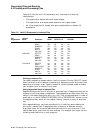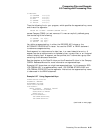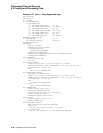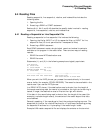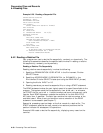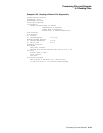
Processing Files and Records
6.3 Creating and Processing Files
Table 6–5 Valid I/O Statements for Relative Files
Open Mode
File
Organization
Access
Mode Statement INPUT OUTPUT I-O EXTEND
RELATIVE SEQUENTIAL DELETE
READ
REWRITE
START
WRITE
UNLOCK
No
Yes
No
Yes
No
Yes
No
No
No
No
Yes
Yes
Yes
Yes
Yes
Yes
No
Yes
No
No
No
No
Yes
Yes
RANDOM DELETE
READ
REWRITE
WRITE
UNLOCK
No
Yes
No
No
Yes
No
No
No
Yes
Yes
Yes
Yes
Yes
Yes
Yes
No
No
No
No
No
DYNAMIC DELETE
READ
READ NEXT
REWRITE
START
WRITE
UNLOCK
No
Yes
Yes
No
Yes
No
Yes
No
No
No
No
No
Yes
Yes
Yes
Yes
Yes
Yes
Yes
Yes
Yes
No
No
No
No
No
No
No
Writing a Relative File
Each WRITE statement places a record into a cell that contains no valid data. If
the cell does not already exist, the I/O system creates it. To change the contents
of a cell that already contains valid data, use the REWRITE statement.
6.3.4 File Handling for Indexed Files
Creating an indexed file involves the following tasks:
1. Specifying ORGANIZATION IS INDEXED in the Environment Division
SELECT clause
2. Specifying ACCESS MODE IS SEQUENTIAL (or RANDOM or DYNAMIC) in
the Environment Division SELECT clause
3. Opening the file for OUTPUT (to create and add records) or for I-O (to add,
change, delete, or extend records)
4. Initializing the key values
5. Executing a WRITE statement
6. Closing the file
One way to populate an indexed file is to sequentially write the records in
ascending order by primary key. Example 6–26 creates and populates an indexed
file from a sequential file, which has been sorted in ascending sequence on the
primary key field. Notice that the primary and alternate keys are initialized in
ICE-CREAM-MASTER when the contents of the fields in INPUT-RECORD are
read into ICE-CREAM-MASTER before the record is written.
6–32 Processing Files and Records



